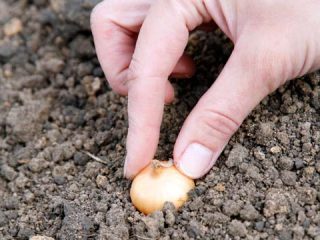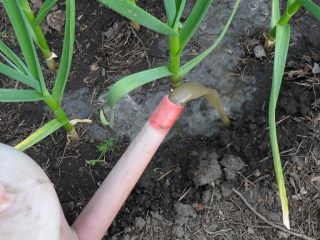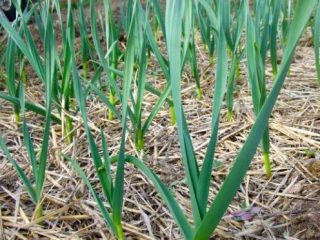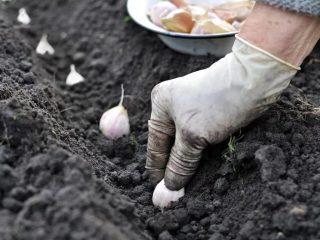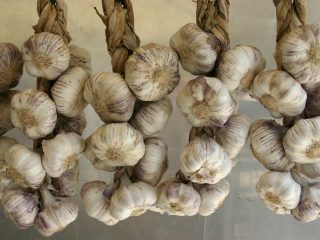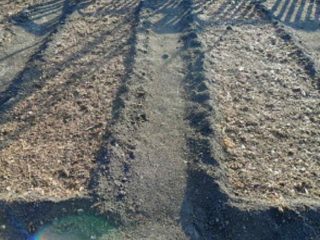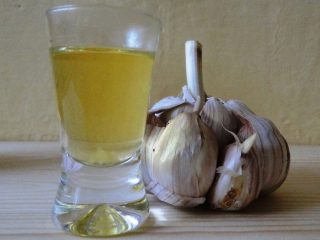Content
Autumn is the time for preparations. Stores provide a large selection of domestic and foreign vegetables. Ordinary people have a problem of choosing: beauty or quality. So that the shelf life is long and the taste is pleasant. Several signs will help you distinguish Chinese from Russian garlic.
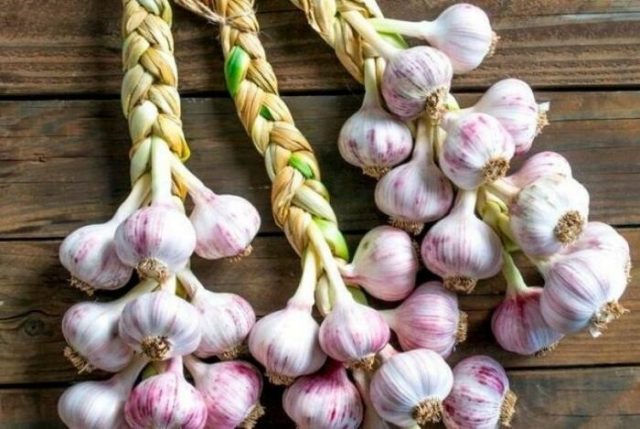
Experts believe that foreign vegetable does not provide health benefits
Why Chinese garlic is harmful
The foreign vegetable is classified as an ornamental species. Gardeners grow it as a bulbous plant known as Onion Garlic or Jusai. In China, the vegetable is used as a seasoning for dishes.

Chinese garlic is round in shape, white in color, sometimes has a purple tint.
The head can reach 10 cm in diameter. The imported vegetable lacks an internal core, and the cloves are smooth and even. This characteristic allows you to identify Chinese garlic.
During growth, the head becomes green, and when ripe it turns white. In China, garlic is used in folk medicine, but the product that goes on the shelves of domestic stores is not so healthy. Experts point to the following reasons:
- high content of pesticides;
- for long-term storage and transportation, garlic heads are treated with chlorine;
- contaminated soil;
- Industrial complexes use unfiltered water.
Toxic pesticides are used as fertilizer to ripen quickly and produce large heads. Many compounds are prohibited for use in other countries. As a result, a person develops allergic reactions that are dangerous to the health of pregnant women and children.
Before shipping, the manufacturer treats the crop with a chlorine solution to prolong shelf life and kill insects. The drug whitens the husk and makes the product more attractive to the consumer. Chlorine irritates the upper respiratory tract and stimulates the development of cancer cells.
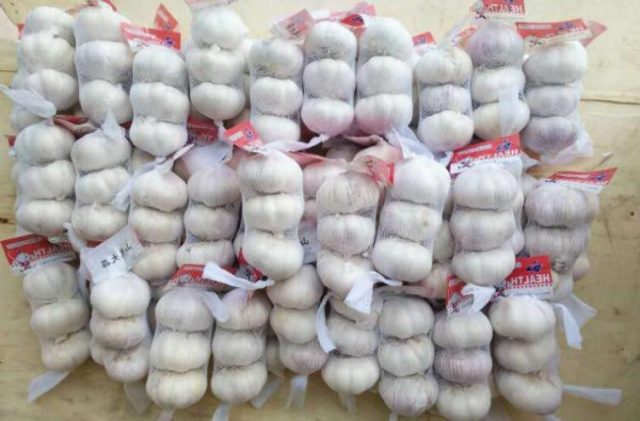
Eating artificially bleached vegetables is dangerous to human health, especially for the elderly and children.
Constant fertilization of the soil with pesticides makes the soil composition toxic. Oversaturation with chemical elements such as cadmium, arsenic or heavy metals leads to the accumulation of poisons in garlic heads. During testing, experts discovered dangerous levels of pesticides in the vegetable.
The quality of water in China's rivers has long puzzled scientists. Industrial waste flows into reservoirs, from which plants are subsequently watered.
What is the difference between Chinese garlic and Russian garlic?
When choosing a product, experts advise giving preference to domestic ones. In order not to make a mistake when purchasing, the following differences between Chinese and Russian garlic are distinguished:
- white head color;
- smell and taste;
- no roots on the head;
- lack of germination and drying out;
- weight.
Head color
To check Chinese garlic, pay attention to the white and smooth husk. Sometimes the head may have a slightly purple tint. The buyer should be wary of the bleached color of the product. Domestic vegetables usually look gray and sometimes dirty.
No roots
After harvesting, the manufacturer carries out pre-sale preparation. In China, the roots are cut off with scissors, which prevents further reclamation of the plant. The roots are generally invisible. Only the rim remains. Domestic heads - with noticeable roots cut off. You can distinguish Chinese garlic from Russian garlic by carefully examining the photo.
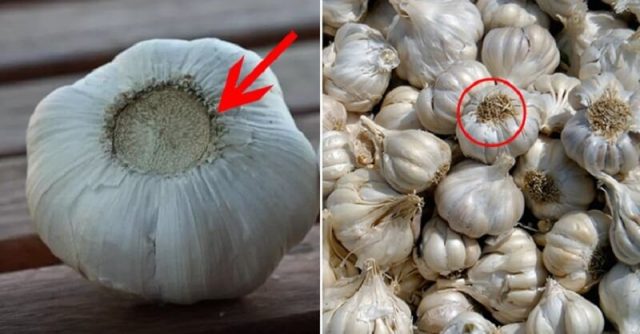
The roots of the Chinese vegetable are cut right to the rosette; subsequent processing does not allow them to germinate
Weight
The content of tanning solids in the imported product is higher, so its weight is less. They prevent drying out, so the Chinese bulbous vegetable retains its juiciness longer.
The imported product contains less essential oils because there is no central core. Therefore, when choosing, you can distinguish Russian garlic from Chinese by weight.
Doesn't germinate
Chinese garlic also differs from Russian garlic in that the former does not sprout. The imported product is shelf-stable due to chemical treatment. The Russian vegetable begins to dry out and sprout in January-February next.
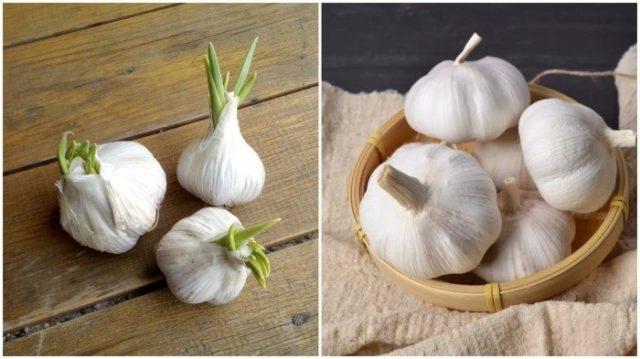
Chinese garlic retains its juiciness longer and does not sprout
Smell and taste
Often the cloves fall apart. Some are dry, while others, on the contrary, are covered with mold. The taste of such a product is not comparable to domestic ones. It is not as sharp because there is no central rod.
The color of garlic may change when boiled. Nothing bad happens. It is possible that the vegetable will turn green during cooking.This should not alarm the hostess. This factor does not indicate that the product is imported. The domestic product may also change color to greenish or bluish.
Experts explain this ability by the fact that when broken and cleaned, the essential oil allicin is released. That's why garlic has such a pungent smell and burning taste.
When heated, allicin breaks down into sulfates and sulfites. When interacting with water, a chemical reaction occurs, as a result of which pigments are released, and the vegetable turns green or blue. These essential oils are not harmful to human health.
More ripe and larger heads acquire a rich color, because the amino acid content in the product is higher than usual. The young vegetable does not change color.
China is located in a warmer climate zone, so the vegetable reaches its maximum degree of ripeness. It’s colder in Russia, so garlic doesn’t have time to absorb a large amount of amino acids.
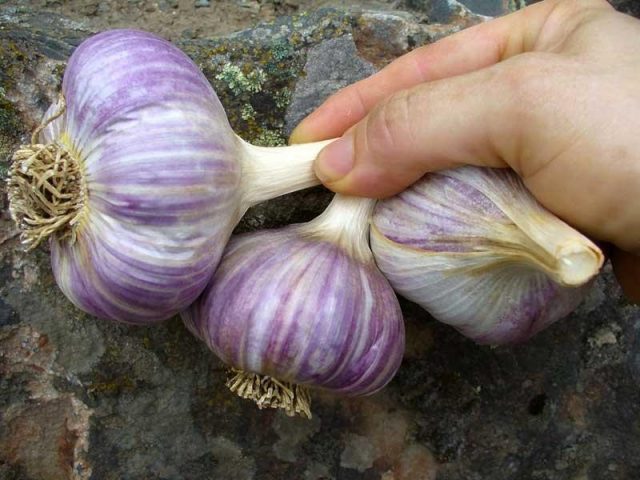
Chinese vegetable contains more amino acids due to growing climate conditions
Conclusion
Appearance will help you distinguish Chinese garlic from Russian garlic. Excessively whitish heads are the first sign that the product is imported. Experts consider the domestic product more useful. A vegetable grown in your own garden plot will definitely be free of harmful impurities.
